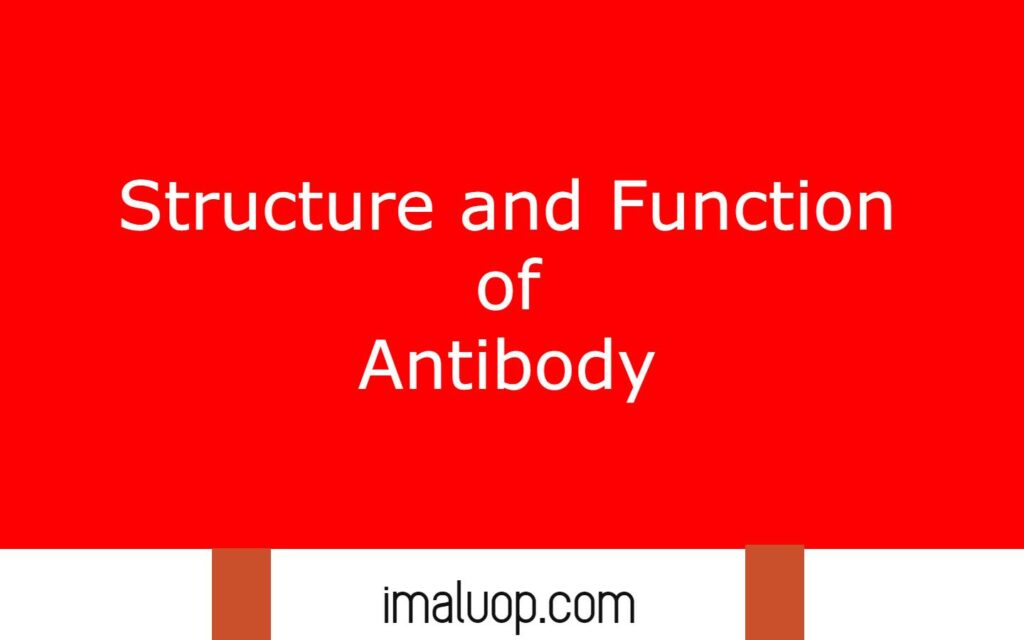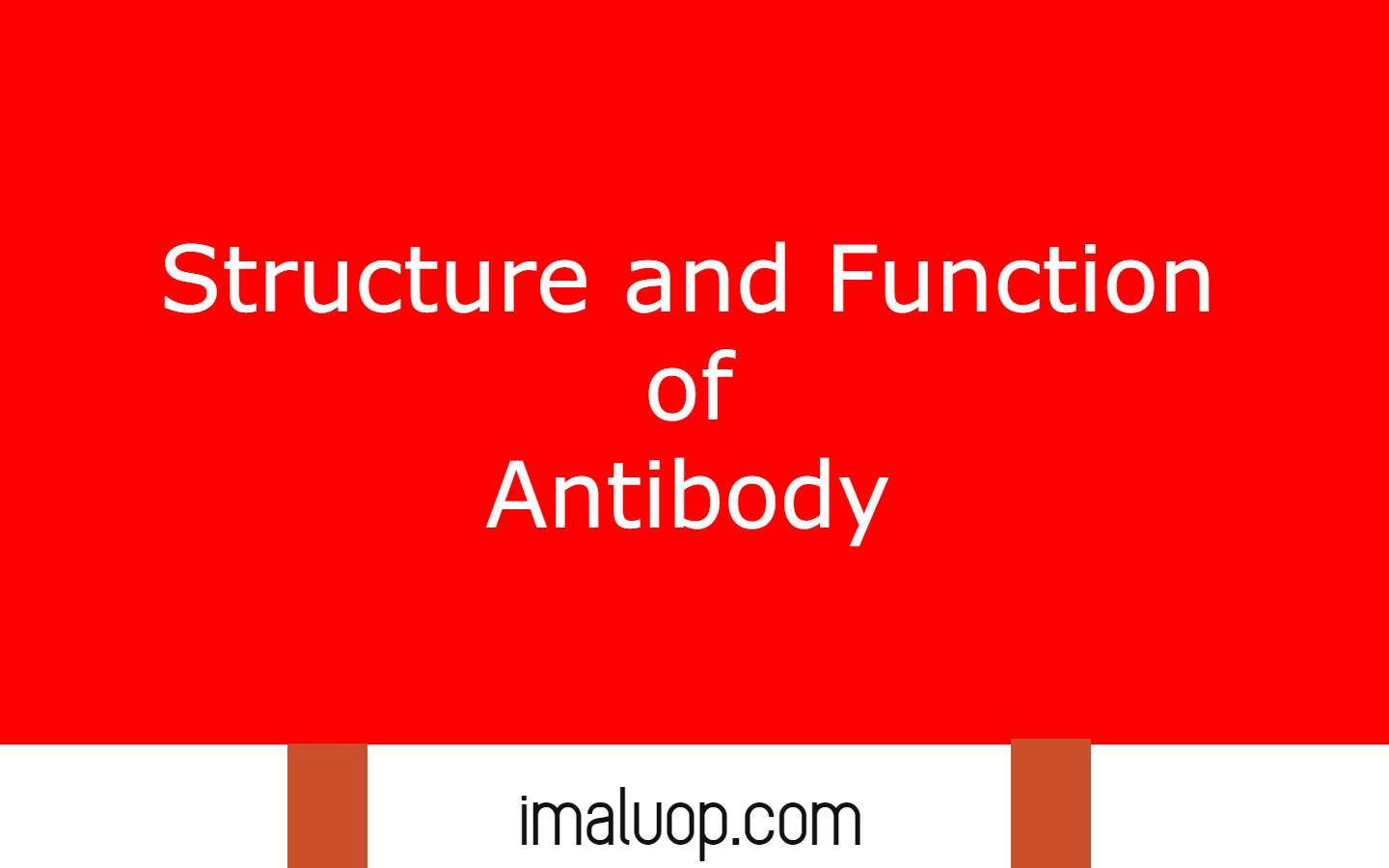Hi, we are going to discuss the structure and function of antibody along with types of antibodies.
Table of Contents
What is Antibody:
Antibody is a type of blood protein which takes part in immunological reaction during the time to entry of external antigen into our body. Antibodies are globular proteins produced by plasma cells and neutralize the antigen to make them inactive to prevent the external harmful agent from damaging our body cells.
Antibodies show their response in presence of some external agent called as antigen which may be any chemical or part of an external harmful pathogen which is an indication of pathogen and our immunity system detects it.
Antigen triggers an immunological reaction in which antibodies and other elements of our immunity system become active to fight against external pathogens.
Types of Antibody:
Antibody or immunoglobulin can be divided into five types due to differences in their structure in arrangements of polypeptide chains in their structure.
Immunoglobulin M:
It is the largest size immunoglobulin of all antibodies and presents it in pentameric form which is produced first in response to antigen. When antigen enters inside our body, antigen binds to the large number of antigenic sites present on the surface of immunoglobulin M and inactive the antigen by agglutination and opsonization.
Immunoglobulin G:
This type of antibody isotype is the most abundant antibody in blood plasma, 80% antibody is immunoglobulin G which is able to enter into the fetus through the placenta from mother blood. Immunoglobulin G is responsible for developing immunity in the body of the fetus and immunoglobulin G inactive toxin and pathogen enter inside the body through promotion of phagocytosis.
Immunoglobulin A:
This isotype of antibody is present in all types of body fluids like saliva, mother milk, intestinal fluid which make the first line of defence in our body and constitute about 13% of total serum antibody. This antibody present in mother milk makes the infant resistant to the infection in the gastrointestinal tract and it is of two types IgA1 and IgA2.
Immunoglobulin D:
They are present in blood in very small amounts and present on plasma cells which activate B cells and help in differentiation and present in monomeric form.
Immunoglobulin E:
This type of antibody is responsible for allergic response which is present in the respiratory tract and digestive tract and it is present in very few amounts in blood serum.
Structure of Antibody:
Antibodies are made of polypeptide chains in which four subunits present in each antibody molecule and each subunit have a light chain and a heavy chain. Different subunits in an antibody arrange in a ‘Y’ like structure and the N terminal of heavy chain with light chain form antigen binding sites with which antigen bind with antibody, so in an antibody there are two antigen binding sites.
The C terminal of heavy chain forms a fragment crystallization domain which binds to effector cells and all the four polypeptide subunits join together by disulfide bond. Antigen binding sites are specific for different antigen and the heavy chain has a variable region while other three regions are constant.

Function of Antibody:
- Antibodies directly attack viral pathogens while in case of bacterial pathogen antibodies activate the immunity system in our body.
- Antibodies fight with antigen but after that antigen is present in our body for long term which is useful to react with antigen in future.
- They work like the first line of defence and activate phagocytic cells to promote phagocytosis to finish the external pathogen.
- The secretion contains antigen with which antibodies bind and they are expelled from the body by the antibody because antibodies bind with antigen and all the pathogen expelled in the form of aggregate.
Reference: Structure and Function of Antibody
Read More: Nervous System General Overview
Hi Everyone!!! Welcome to Imaluop. Imaluop always try to learn some new and he want to share to other people. Here we will try to learn various topics on Science, specially on Biological Sciences.
